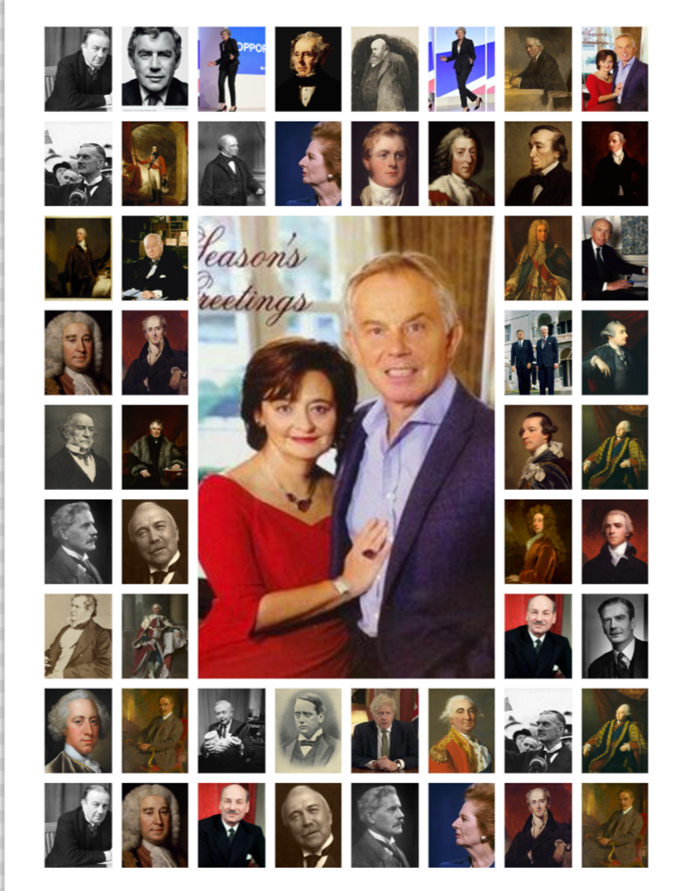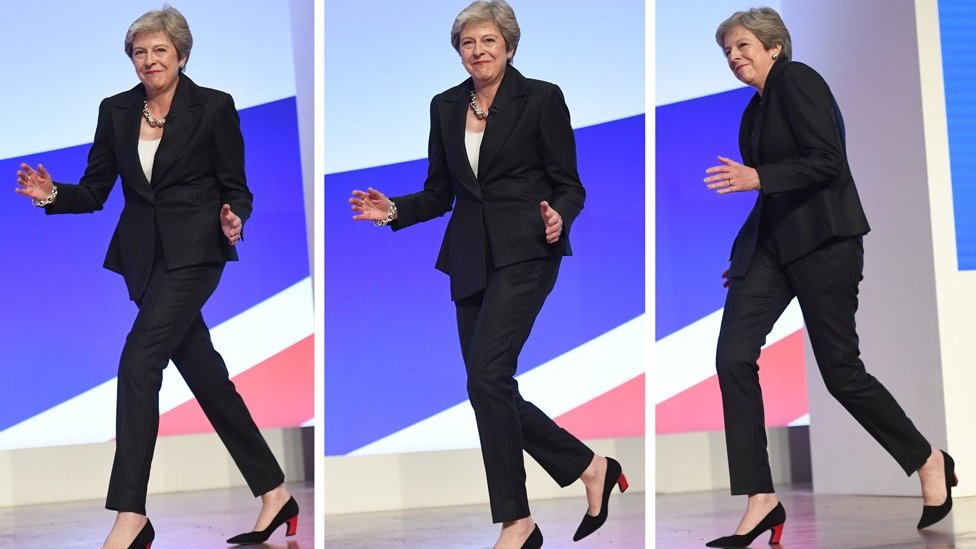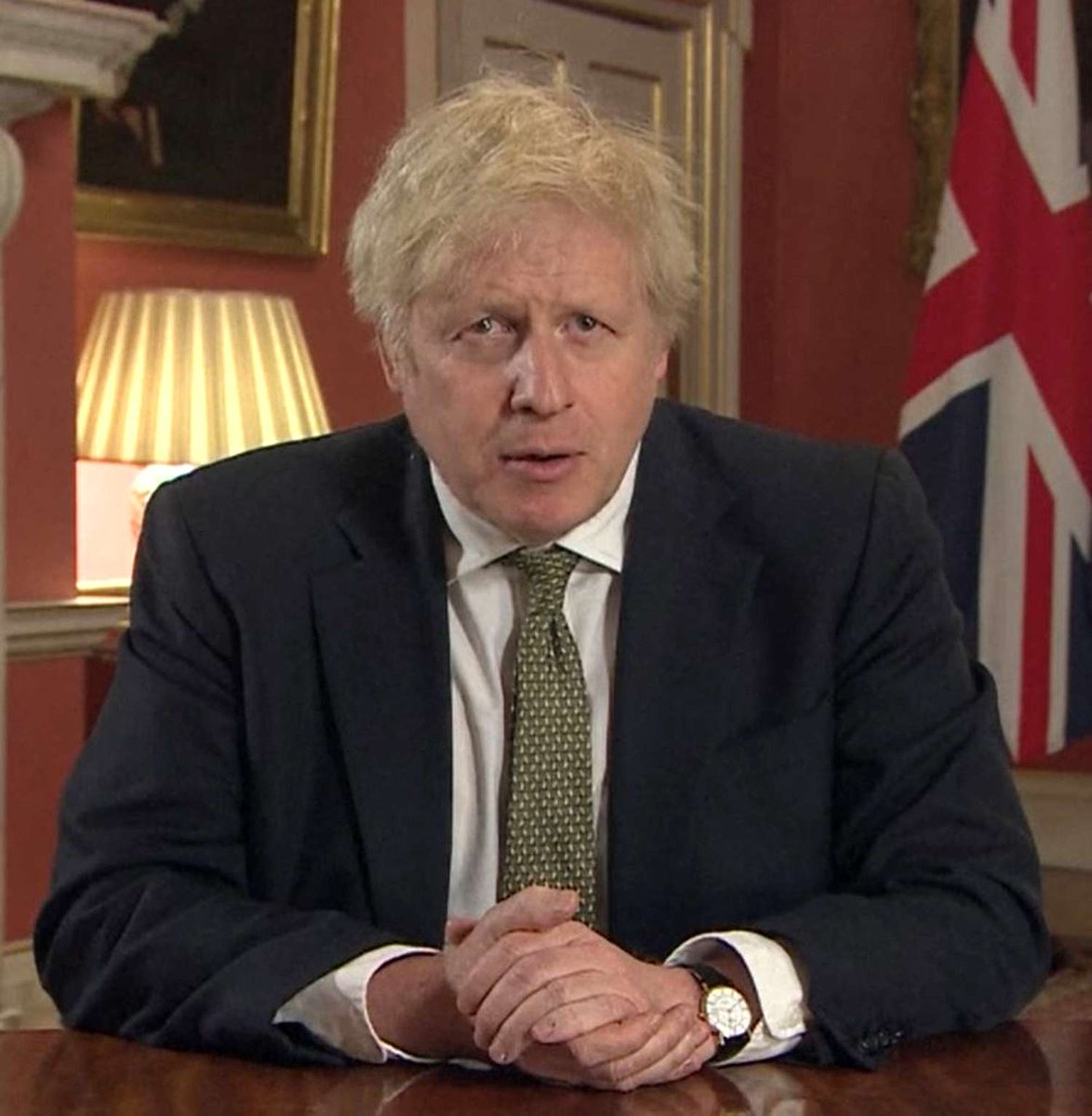1. Sir Robert Walpole (1721–42) Whig
The first British Prime Minister as we understand the role today. With George I seemingly disinterested in Britain's affairs, Walpole stepped up and dominated the political scene for two decades. The longest ever serving Prime Minister.
The first British Prime Minister as we understand the role today. With George I seemingly disinterested in Britain's affairs, Walpole stepped up and dominated the political scene for two decades. The longest ever serving Prime Minister.

2. Spencer Compton, Earl of Wilmington (1742–43) Whig
Became Prime Minister after Walpole’s government lost a vote of no confidence by just one vote. Bit of a stopgap replacement. Died in office after one year.
Became Prime Minister after Walpole’s government lost a vote of no confidence by just one vote. Bit of a stopgap replacement. Died in office after one year.

3. Henry Pelham (1743–54) Whig
Served for ten years until his death. Capable financially and administratively; a man of integrity. Relatively uneventful time in office. The Prime Minster came to be almost entirely dependent on a Commons majority than on royal prerogative.
Served for ten years until his death. Capable financially and administratively; a man of integrity. Relatively uneventful time in office. The Prime Minster came to be almost entirely dependent on a Commons majority than on royal prerogative.

4. Thomas Pelham-Holles, Duke of Newcastle (1754–56; 1757-62) Whig
Henry Pelham’s old brother, the Duke of Newcastle, had been involved in politics since the age of twenty one, when he entered the House of Lords. Had a very fractious relationship with the king, George II.
Henry Pelham’s old brother, the Duke of Newcastle, had been involved in politics since the age of twenty one, when he entered the House of Lords. Had a very fractious relationship with the king, George II.

5. William Cavendish, Duke of Devonshire (1756–57) Whig
A sort of interim Prime Minister while the other prominent members of the Whigs were squabbling amongst themselves. His wealth, heritage, and family ties made him a stable compromise. Only spent 225 days in office.
A sort of interim Prime Minister while the other prominent members of the Whigs were squabbling amongst themselves. His wealth, heritage, and family ties made him a stable compromise. Only spent 225 days in office.

6. John Stuart, Earl of Bute (1762–63) Tory
A favourite of King George III, having been his tutor, and perhaps the last prominent “royal favourite” in British politics. Famously imposed a tax on cider to pay for the Seven Years War. First Scottish Prime Minister.
A favourite of King George III, having been his tutor, and perhaps the last prominent “royal favourite” in British politics. Famously imposed a tax on cider to pay for the Seven Years War. First Scottish Prime Minister.

7. George Grenville (1763–65) Whig
From a family of politicians, Grenville became Prime Minister when the Earl of Bute resigned. This was a turbulent time. It was Grenville’s imposition of new duties on American colonies that paved the way for the War of Independence.
From a family of politicians, Grenville became Prime Minister when the Earl of Bute resigned. This was a turbulent time. It was Grenville’s imposition of new duties on American colonies that paved the way for the War of Independence.

8. The Marquess of Rockingham (1765–66; 1782)
Leader of the Rockinghamite Whigs, who followed in footsteps of the Pelham brothers. He was a vocal critic of government policy in America who had an uneasy relationship with royal power. Died in office during an influenza pandemic.
Leader of the Rockinghamite Whigs, who followed in footsteps of the Pelham brothers. He was a vocal critic of government policy in America who had an uneasy relationship with royal power. Died in office during an influenza pandemic.

9. William Pitt the Elder, Earl of Chatham (1766–68) Whig
Although he was only Prime Minister for two years, Pitt the Elder dominated British politics for decades. He was popular, influential, and a brilliant speaker, and Britain’s true leader during the Seven Years’ War.
Although he was only Prime Minister for two years, Pitt the Elder dominated British politics for decades. He was popular, influential, and a brilliant speaker, and Britain’s true leader during the Seven Years’ War.

10. Augustus Henry Fitzroy, Duke of Grafton (1768–70) Whig
His political career (dominated in any case by American affairs) was overshadowed by a complex and scandalous personal life. Became Prime Minister at just 33. Was forced to step down in the end.
His political career (dominated in any case by American affairs) was overshadowed by a complex and scandalous personal life. Became Prime Minister at just 33. Was forced to step down in the end.

11. Lord North (1770–82) Tory
In office during Britain’s defeat in the American War of Independence, which has tarnished his reputation ever since, along with accusations of servitude to the king. Some said he was a good Parliamentarian, other that he wasn't a man for a crisis.
In office during Britain’s defeat in the American War of Independence, which has tarnished his reputation ever since, along with accusations of servitude to the king. Some said he was a good Parliamentarian, other that he wasn't a man for a crisis.

12. William Petty-Fitzmaurice, Earl of Shelburne (1782–83) Whig
Became Prime Minister after Rockingham’s death, who had himself became Prime Minister after the fall of Lord North’s government. Secured peace with America. Lasted only 266 days in office.
Became Prime Minister after Rockingham’s death, who had himself became Prime Minister after the fall of Lord North’s government. Secured peace with America. Lasted only 266 days in office.

13. Duke of Portland (1783; 1807-1809) Whig
Served two terms as Prime Minister twenty five years apart (a record, of course). His first was brief, his second longer. Sided with Pitt the Younger in the aftermath of the French Revolution. Died shortly after leaving office.
Served two terms as Prime Minister twenty five years apart (a record, of course). His first was brief, his second longer. Sided with Pitt the Younger in the aftermath of the French Revolution. Died shortly after leaving office.

14.William Pitt the Younger (1783–1801; 1804-1806) Tory & Whig
The youngest ever Prime Minister at just 24. Served a tumultuous first term as the French Revolution and the Napoleonic Wars rocked Europe. A brilliant administrator and highly respected man. Died at just 46.
The youngest ever Prime Minister at just 24. Served a tumultuous first term as the French Revolution and the Napoleonic Wars rocked Europe. A brilliant administrator and highly respected man. Died at just 46.
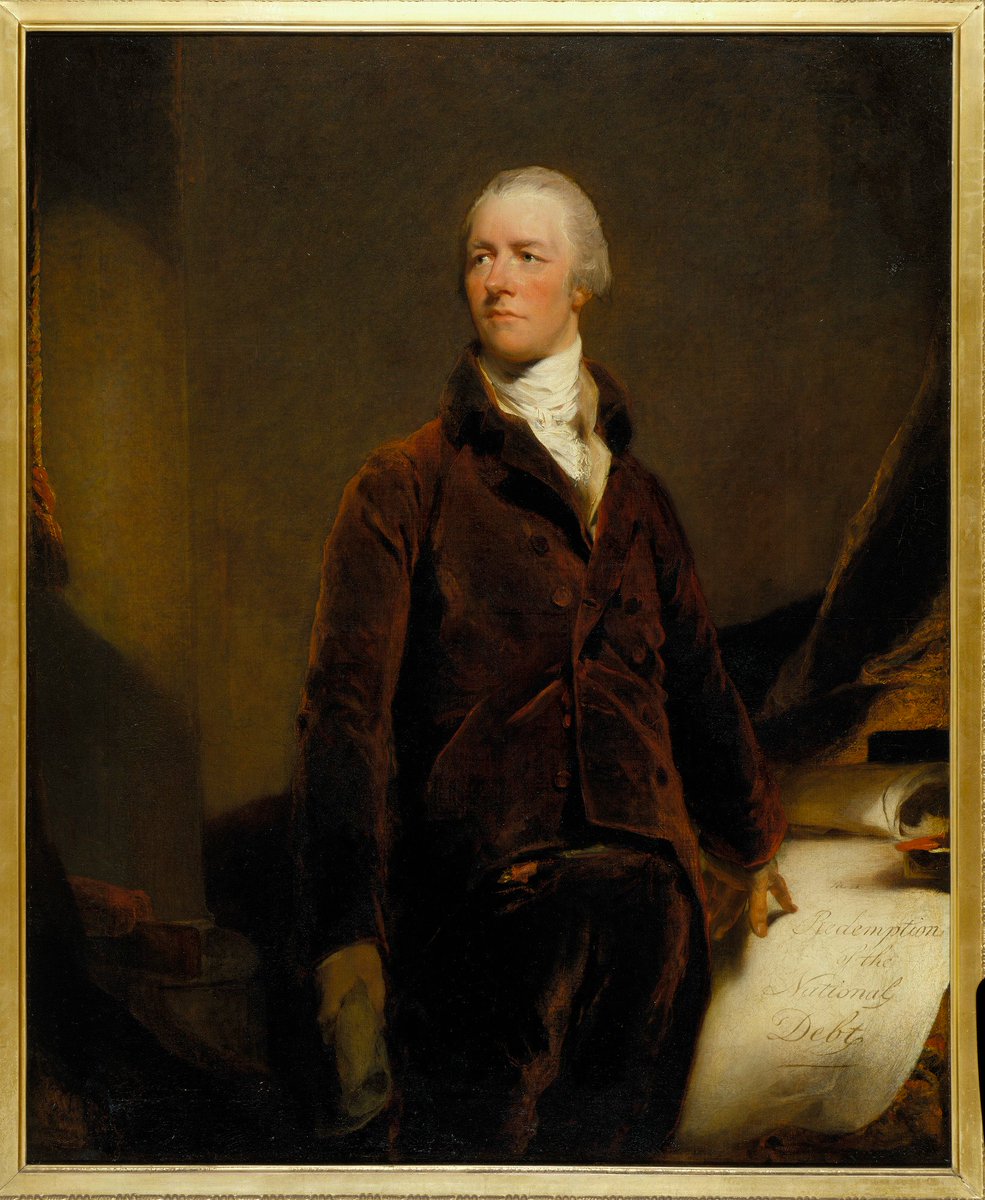
15. Henry Addington (1801–04) Tory
Served between Pitt the Younger’s two terms. More famous for his later career as the Home Secretary during the 1810s when he reacted harshly to movements for democratic reform.
Served between Pitt the Younger’s two terms. More famous for his later career as the Home Secretary during the 1810s when he reacted harshly to movements for democratic reform.

16.William Wyndham Grenville, Baron Grenville (1806–07) Whig
In a brief tenure of one year and forty two days Baron Grenville oversaw the Slave Trade Act 1807, which abolished the slave trade in the British Empire. Failed to address ongoing diplomatic crises. Forced from office.
In a brief tenure of one year and forty two days Baron Grenville oversaw the Slave Trade Act 1807, which abolished the slave trade in the British Empire. Failed to address ongoing diplomatic crises. Forced from office.

17. Spencer Perceval (1809–12) Tory
Originally a lawyer, Perceval was drawn to politics and enjoyed a rapid rise. Overcame many crises, such as the Luddite Riots, and pushed on with the Peninsula War. The only Prime Minister to be assassinated (by a disgruntled merchant).
Originally a lawyer, Perceval was drawn to politics and enjoyed a rapid rise. Overcame many crises, such as the Luddite Riots, and pushed on with the Peninsula War. The only Prime Minister to be assassinated (by a disgruntled merchant).

18. Earl of Liverpool (1812–27) Conservative
Formed a government after Perceval’s assassination. Despite the odds he survived a long time in office, supported by the likes of Wellington, Castlereagh, and Canning. Responded punitively to post-Napoleonic political radicalism.
Formed a government after Perceval’s assassination. Despite the odds he survived a long time in office, supported by the likes of Wellington, Castlereagh, and Canning. Responded punitively to post-Napoleonic political radicalism.

19. George Canning (1827) Tory
Popular and charismatic. One of the first true political campaigners. Famously duelled with Castlereagh in 1809, despite having never fired a pistol. Died suddenly in office of pneumonia. His last words were “Spain and Portugal”.
Popular and charismatic. One of the first true political campaigners. Famously duelled with Castlereagh in 1809, despite having never fired a pistol. Died suddenly in office of pneumonia. His last words were “Spain and Portugal”.

20.Viscount Goderich (1827–28) Tory
One of those Prime Ministers whose time in office was overshadowed by changes in the broader political landscape. Couldn’t hold together Goderich’s coalition. His 144 days *was* the shortest ever tenure. Did return to high office though.
One of those Prime Ministers whose time in office was overshadowed by changes in the broader political landscape. Couldn’t hold together Goderich’s coalition. His 144 days *was* the shortest ever tenure. Did return to high office though.

21. Arthur Wellesley, Duke of Wellington (1828–30; 1834) Tory
The Iron Duke. Led the British Army in the Peninsular War and at the Battle of Waterloo. Became a national hero. Pushed through Catholic emancipation but was otherwise resistant and lost much of his popularity.
The Iron Duke. Led the British Army in the Peninsular War and at the Battle of Waterloo. Became a national hero. Pushed through Catholic emancipation but was otherwise resistant and lost much of his popularity.

22. Charles Grey, the Earl Grey (1830–34) Whig
The namesake of Earl Grey tea. Oversaw the passage of the Great Reform Act in 1832, which the Duke of Wellington and co had opposed. It was a vicious struggle, but paved the way for Britain’s modern electoral system.
The namesake of Earl Grey tea. Oversaw the passage of the Great Reform Act in 1832, which the Duke of Wellington and co had opposed. It was a vicious struggle, but paved the way for Britain’s modern electoral system.

23. Viscount Melbourne (1834; 1835-41) Whig
Held together a coalition. Appointed as the “least bad choice”. Was an important figure in the political education of the young Queen Victoria. Melbourne in Australia is named after him. His wife had an affair with Lord Byron.
Held together a coalition. Appointed as the “least bad choice”. Was an important figure in the political education of the young Queen Victoria. Melbourne in Australia is named after him. His wife had an affair with Lord Byron.

24.Robert Peel (1834–35; 1841-1846) Conservative
A landmark Prime Minister. Banned the employment of women and children in mines and limited their working hours in factories. Tried to repeal the Corn Laws. Created the Metropolitan Police as Home Secretary (hence “bobbies”).
A landmark Prime Minister. Banned the employment of women and children in mines and limited their working hours in factories. Tried to repeal the Corn Laws. Created the Metropolitan Police as Home Secretary (hence “bobbies”).

25. John Russell, Lord Russell (1846–52; 1865-1866) Whig
The last Whig Prime Minister. Charles Dickens dedicated A Tale of Two Cities to him. Big Parliamentary reformer. Was behind the Great Reform Act of 1832. Long political career, but never had strong support.
The last Whig Prime Minister. Charles Dickens dedicated A Tale of Two Cities to him. Big Parliamentary reformer. Was behind the Great Reform Act of 1832. Long political career, but never had strong support.

26. Edward Smith-Stanley, Earl of Derby (1852; 1858-1859; 1866-1868) Tory & Whig
Started his career as Whig but resigned from Melbourne’s government in 1834. Three relatively short terms as Prime Minister spread over sixteen years. Presided over the Second Reform Act in 1847.
Started his career as Whig but resigned from Melbourne’s government in 1834. Three relatively short terms as Prime Minister spread over sixteen years. Presided over the Second Reform Act in 1847.

27. Earl of Aberdeen (1852–55) Conservative
Led a coalition of Peelites, Whigs, radicals, and Irish members. Was blamed for the failure to manage the Crimean War properly, leading to his resignation. Orphaned at birth. Was Lord Byron’s cousin and looked rather similar.
Led a coalition of Peelites, Whigs, radicals, and Irish members. Was blamed for the failure to manage the Crimean War properly, leading to his resignation. Orphaned at birth. Was Lord Byron’s cousin and looked rather similar.

28. Viscount Palmerston (1855–58; 1859-1865) Whig and Liberal
46 years in government. Avoided controversial reform. Dominated British foreign policy for decades and became popular with the public for this, even if his relationship with the political establishment was uneasy.
46 years in government. Avoided controversial reform. Dominated British foreign policy for decades and became popular with the public for this, even if his relationship with the political establishment was uneasy.

29. Benjamin Disraeli (1868; 1874-1880) Conservative
An unusual Prime Minister. Lost his money gambling at 20. Wrote several novels. Got along very well with Queen Victoria. Known as “Dizzy”. Pushed through reform to improve education and the lives of the working people.
An unusual Prime Minister. Lost his money gambling at 20. Wrote several novels. Got along very well with Queen Victoria. Known as “Dizzy”. Pushed through reform to improve education and the lives of the working people.

30. William Ewart Gladstone (1868–74; 1880-1885; 1886; 1892-1894) Liberal
The only Prime Minister to serve four terms, and the oldest at 84, also being Chancellor four times. His career lasted 60 years. Did not got along with Queen Victoria at all. Pushed for Irish Home Rule.
The only Prime Minister to serve four terms, and the oldest at 84, also being Chancellor four times. His career lasted 60 years. Did not got along with Queen Victoria at all. Pushed for Irish Home Rule.

31. Lord Salisbury (1885–86; 1886-1892; 1895-1902) Conservative
Last member of the House of Lords to serve as Prime Minister. A long political career, taking over leadership of the Conservatives after Disraeli’s death. Combined the role of Prime Minister and Foreign Secretary.
Last member of the House of Lords to serve as Prime Minister. A long political career, taking over leadership of the Conservatives after Disraeli’s death. Combined the role of Prime Minister and Foreign Secretary.

32. Earl of Rosebery (1894–95) Liberal
Bought a racehorse while at university and was kicked out for doing so. Although an ally of Gladstone who served in his cabinet several times, the Earl of Rosebery didn’t really want to succeed him as Prime Minister. Lasted one year.
Bought a racehorse while at university and was kicked out for doing so. Although an ally of Gladstone who served in his cabinet several times, the Earl of Rosebery didn’t really want to succeed him as Prime Minister. Lasted one year.

33.Arthur James Balfour (1902–05) Conservative
Initially a philosopher, Balfour was the nephew of Lord Salisbury, who he succeeded as Prime Minister. Despite a brief tenure Balfour had a long political career, lasting into the 1920s. Most famous for the Balfour Declaration.
Initially a philosopher, Balfour was the nephew of Lord Salisbury, who he succeeded as Prime Minister. Despite a brief tenure Balfour had a long political career, lasting into the 1920s. Most famous for the Balfour Declaration.

34.Henry Campbell-Bannerman (1905–08) Liberal
The first Prime Minister to be officially known as… Prime Minister. Served under Gladstone and Rosebery and was seen as a safe pair of hands. Opposed the Boer War and restored independence to the Transvaal and Orange Free State.
The first Prime Minister to be officially known as… Prime Minister. Served under Gladstone and Rosebery and was seen as a safe pair of hands. Opposed the Boer War and restored independence to the Transvaal and Orange Free State.

35.H.H. Asquith (1908–16) Liberal
Usually known as HH. Edward VII was abroad when he succeeded Campbell-Bannerman and is the only Prime Minister to take office on foreign soil. Introduced the Parliament Act and the National Insurance Act. Also: First World War.
Usually known as HH. Edward VII was abroad when he succeeded Campbell-Bannerman and is the only Prime Minister to take office on foreign soil. Introduced the Parliament Act and the National Insurance Act. Also: First World War.

36.David Lloyd George (1916–22) Liberal
Only Prime Minister to speak Welsh as his first language. Raised by his uncle, a cobbler. A famous radical and reformer, especially as Chancellor, Lloyd George was charismatic, unusual, and a witty. Acclaimed as the man who won the far.
Only Prime Minister to speak Welsh as his first language. Raised by his uncle, a cobbler. A famous radical and reformer, especially as Chancellor, Lloyd George was charismatic, unusual, and a witty. Acclaimed as the man who won the far.

37. Andrew Bonar Law (1922–23) Conservative
The only Canadian Prime Minister. Moved to Scotland aged 12. Had a reputation for honesty and fearlessness. Saved the Conservative party and forced Lloyd George to resign when they withdrew support. Died just after leaving office.
The only Canadian Prime Minister. Moved to Scotland aged 12. Had a reputation for honesty and fearlessness. Saved the Conservative party and forced Lloyd George to resign when they withdrew support. Died just after leaving office.
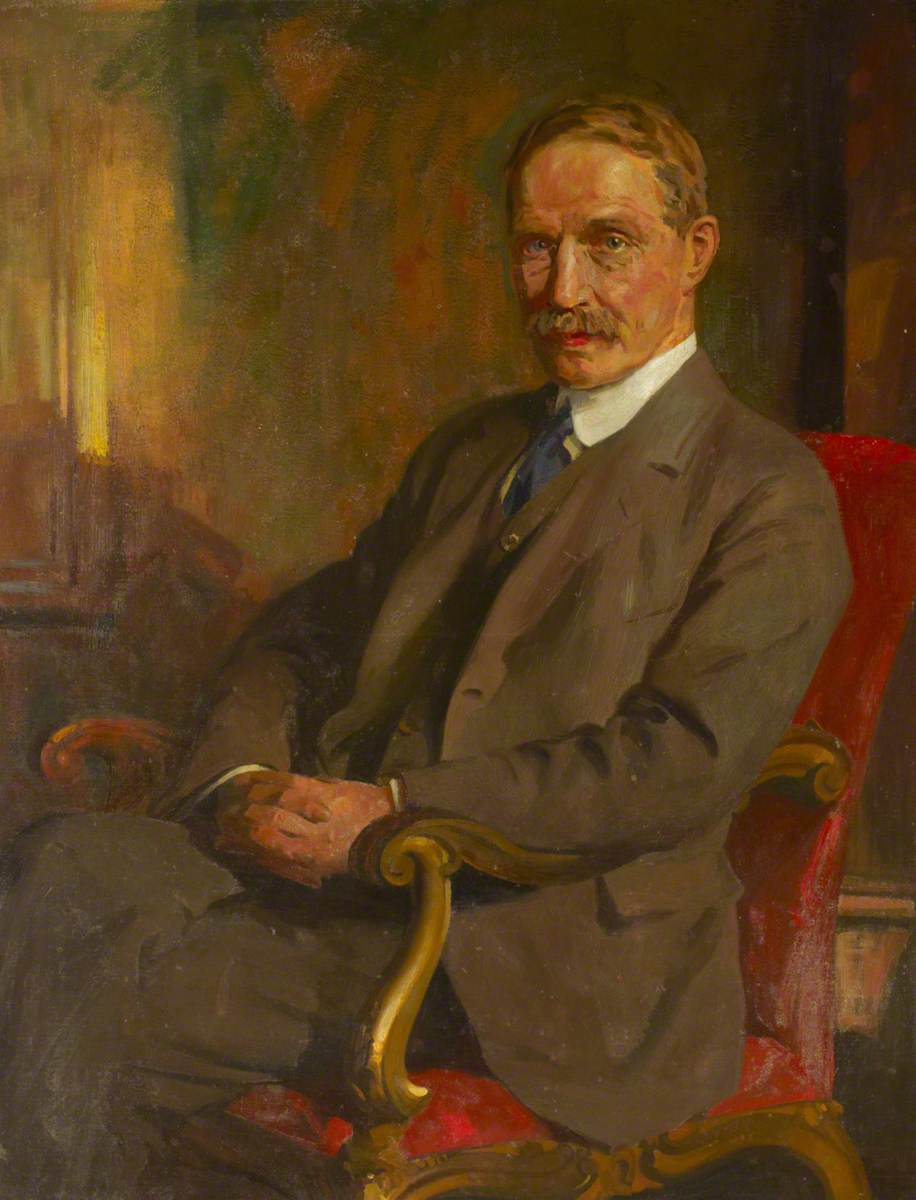
38. Stanley Baldwin (1923–24; 1924-1929; 1935-1937) Conservative
From a business background, Baldwin gave fifth of his wealth to relieve Britain’s financial troubles. Chancellor under Bonar Law. Fought the ‘press lords’. Criticised for not doing enough about the rise of Nazism.
From a business background, Baldwin gave fifth of his wealth to relieve Britain’s financial troubles. Chancellor under Bonar Law. Fought the ‘press lords’. Criticised for not doing enough about the rise of Nazism.

39. Ramsay MacDonald (1924; 1929-1935) Labour
First Labour Prime Minister. From a working class Scottish family. Originally a teacher. He appointed the first female minister and led two minority governments. Overshadowed by troubled times. Helped form the National Government.
First Labour Prime Minister. From a working class Scottish family. Originally a teacher. He appointed the first female minister and led two minority governments. Overshadowed by troubled times. Helped form the National Government.

40.Neville Chamberlain (1937–40) Conservative
Defined by a single moment: the Munich Agreement of 1938, when he met Hitler and claimed to have achieved “peace for our times”. Did everything to prevent war. Forced to resign after the disastrous opening to the Second World War.
Defined by a single moment: the Munich Agreement of 1938, when he met Hitler and claimed to have achieved “peace for our times”. Did everything to prevent war. Forced to resign after the disastrous opening to the Second World War.

41. Winston Churchill (1940–45; 1951-1955) Conservative
From an aristocratic family, Churchill was involved in British Politics for six decades. Led the all-party coalition during the Second World War. Won the Nobel Prize for Literature in 1953. Resigned because of ill-health.
From an aristocratic family, Churchill was involved in British Politics for six decades. Led the all-party coalition during the Second World War. Won the Nobel Prize for Literature in 1953. Resigned because of ill-health.

42. Clement Attlee (1945–51) Labour
Won a surprising victory over Churchill after the Second World War. The National Health Service was created during his tenure, along with a swathe of social welfare reforms. Nationalised one fifth of the UK’s economy.
Won a surprising victory over Churchill after the Second World War. The National Health Service was created during his tenure, along with a swathe of social welfare reforms. Nationalised one fifth of the UK’s economy.

43.Anthony Eden (1955–57) Conservative
Eden succeeded Churchill and increased the Conservative majority, but suffered from ill-health and falling popularity. Known forever as the leader who dealt with Suez Crisis inappropriately. That was his downfall.
Eden succeeded Churchill and increased the Conservative majority, but suffered from ill-health and falling popularity. Known forever as the leader who dealt with Suez Crisis inappropriately. That was his downfall.

44. Harold Macmillan (1957–63) Conservative
The half-American Macmillan somehow kept the Conservatives in power after the Suez Crisis, and, as living standards rose, was dubbed “Supermac”. Believed that Britain should join the European Economic Community. De Gaulle said non.
The half-American Macmillan somehow kept the Conservatives in power after the Suez Crisis, and, as living standards rose, was dubbed “Supermac”. Believed that Britain should join the European Economic Community. De Gaulle said non.

45. Alec Douglas-Home (1963–64) Conservative
Technically the last peer to serve as Prime Minister, Douglas-Home rejected his peerage and contested a by-election to become a member of the House of Commons. Thus he spent two weeks as a Prime Minister in neither house.
Technically the last peer to serve as Prime Minister, Douglas-Home rejected his peerage and contested a by-election to become a member of the House of Commons. Thus he spent two weeks as a Prime Minister in neither house.

46. Harold Wilson (1964–70; 1974-1976) Labour
Won four out of five elections he contested as Labour leader. Wilson led many social and legal reforms, such as the abolition of the death penalty and the creation of the Open University. Made a surprise decision to resign in 1976.
Won four out of five elections he contested as Labour leader. Wilson led many social and legal reforms, such as the abolition of the death penalty and the creation of the Open University. Made a surprise decision to resign in 1976.

47. Edward Heath (1970–74) Conservative
Born to a working class family, Heath fought in the Second World War and later rose up the political ladder, backing Macmillan’s effort to join the EEC. Became Prime Minister during a phase of economic decline. Defeated by Trade Unions.
Born to a working class family, Heath fought in the Second World War and later rose up the political ladder, backing Macmillan’s effort to join the EEC. Became Prime Minister during a phase of economic decline. Defeated by Trade Unions.

48.James Callaghan (1976–79) Labour
The only 20th century Prime Minister to have been Home Secretary, Foreign Secretary, Chancellor; the tallest Prime Minister. Grew up in the Depression. Faced the same economic troubles as Heath. Defeated by 1 vote in a no confidence motion.
The only 20th century Prime Minister to have been Home Secretary, Foreign Secretary, Chancellor; the tallest Prime Minister. Grew up in the Depression. Faced the same economic troubles as Heath. Defeated by 1 vote in a no confidence motion.

49. Margaret Thatcher (1979–90) Conservative
The so-called Iron Lady was Britain’s first ever female Prime Minister and the longest-serving for over 150 years. A polarising figure, to say the least. Favoured deregulation, took on the Trade Unions, abolished free milk.
The so-called Iron Lady was Britain’s first ever female Prime Minister and the longest-serving for over 150 years. A polarising figure, to say the least. Favoured deregulation, took on the Trade Unions, abolished free milk.

50. John Major (1990–97) Conservative
Served between two of the most dominant figures in modern British politics. Major was Prime Minister during the start of Britain’s longest-ever period of continuous economic growth. Hit by the many ‘Tory sleaze’ scandals. Likes cricket.
Served between two of the most dominant figures in modern British politics. Major was Prime Minister during the start of Britain’s longest-ever period of continuous economic growth. Hit by the many ‘Tory sleaze’ scandals. Likes cricket.

51. Tony Blair (1997–2007) Labour
The architect of “New Labour”, Blair swept to power in 1997 and presided over a swathe of radical constitutional reforms, including devolution. Led Britain into the Afghanistan and Iraq Wars alongside George Bush. Sent odd cards.
The architect of “New Labour”, Blair swept to power in 1997 and presided over a swathe of radical constitutional reforms, including devolution. Led Britain into the Afghanistan and Iraq Wars alongside George Bush. Sent odd cards.

52. Gordon Brown (2007–10) Labour
The co-architect of New Labour with Blair, Brown had long been promised the big job, and after spending a decade as Chancellor he got it just as the global financial crisis hit. Some would say he was the right man at the right time.
The co-architect of New Labour with Blair, Brown had long been promised the big job, and after spending a decade as Chancellor he got it just as the global financial crisis hit. Some would say he was the right man at the right time.

53. David Cameron (2010–16) Conservative
Led Britain’s first coalition government in 70 years along with the Liberal Democrats. Then won a majority in 2015, called for a Brexit Referendum, backed Remain, lost, and resigned.
Led Britain’s first coalition government in 70 years along with the Liberal Democrats. Then won a majority in 2015, called for a Brexit Referendum, backed Remain, lost, and resigned.

56.Liz Truss (2022–2022)
Beat George Canning's two hundred year old record for the shortest time in office.
Beat George Canning's two hundred year old record for the shortest time in office.

• • •
Missing some Tweet in this thread? You can try to
force a refresh

